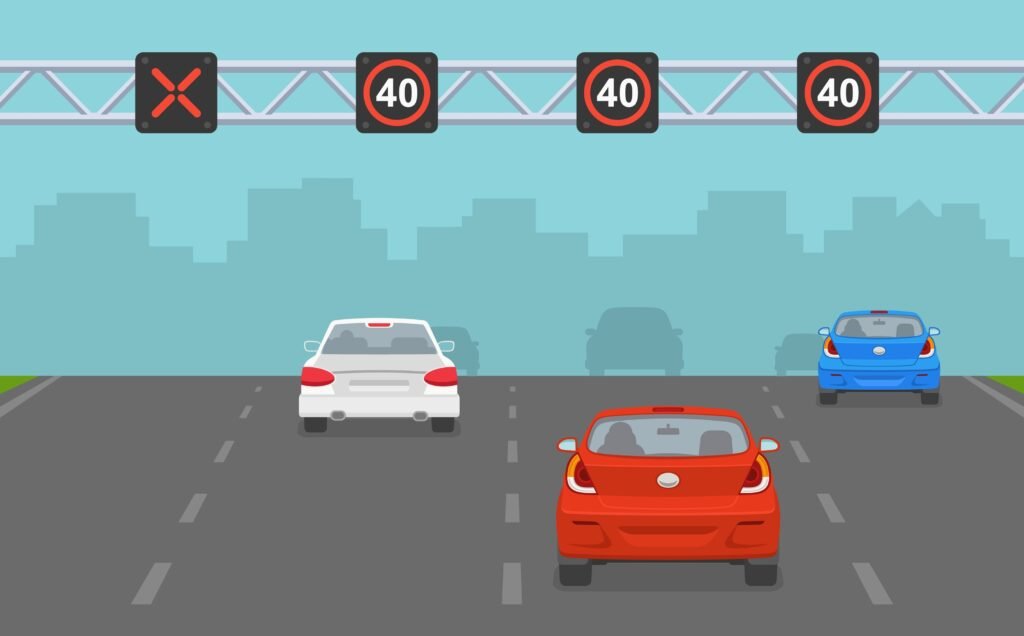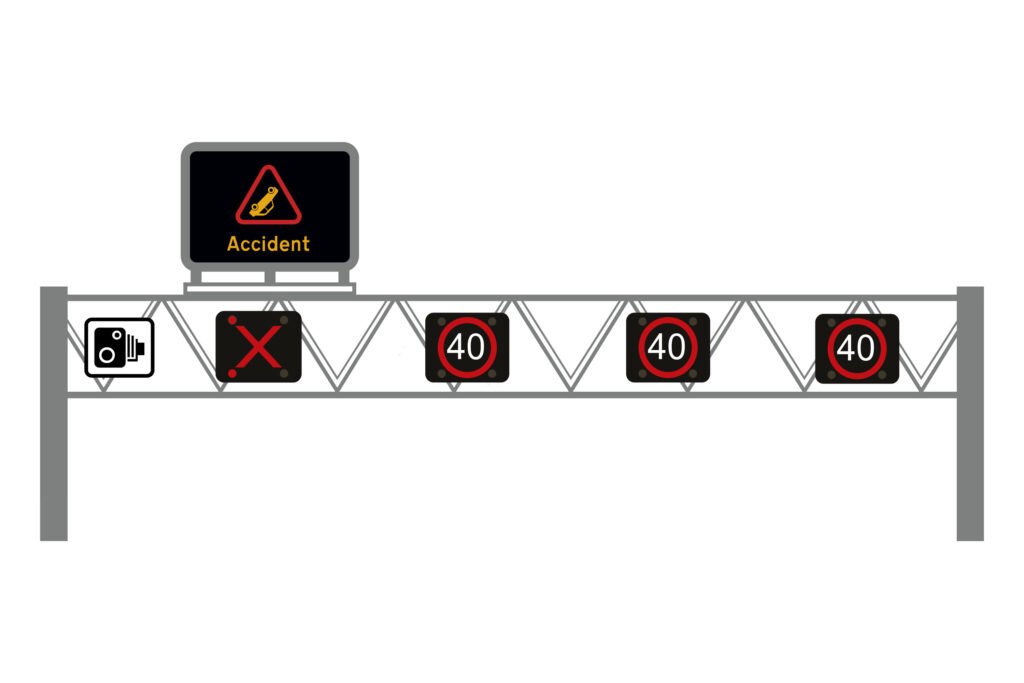
What Is a Smart Motorway in the UK? A Complete Guide
If you’re learning to drive or brushing up on your motorway knowledge, you’ve probably heard the term “smart motorway”. But what exactly is a smart motorway in the UK, and what do drivers need to know about them?
Smart motorways are designed to reduce congestion, improve traffic flow, and increase road capacity without the huge cost and disruption of building new roads. They rely on technology – such as electronic signs, traffic sensors, and CCTV – to manage traffic more effectively.

Why Were Smart Motorways Introduced?
Traffic on UK motorways has grown year after year, especially on routes around major cities. Traditional solutions involved building new lanes, but this is expensive and time-consuming.
Smart motorways aim to make better use of the existing road space by adapting how lanes are used and by introducing variable speed limits to smooth traffic flow.

The Different Types of Smart Motorway
There are three main types of smart motorway you may encounter in the UK:
1. Controlled Motorways
- Have variable speed limits shown on overhead gantries.
- The hard shoulder remains in place and is for emergencies only.
- Speed limits are enforced automatically by cameras.
2. All Lane Running (ALR)
- The hard shoulder is permanently converted into a live traffic lane.
- Instead of a hard shoulder, there are emergency refuge areas (ERAs) spaced along the motorway.
- This is now the most common type of smart motorway in the UK.
3. Dynamic Hard Shoulder Running (DHSR) – being phased out
- The hard shoulder opens as a running lane during busy times.
- Overhead signs show when it’s safe to use.
How Do Smart Motorways Work?
Smart motorways rely on constant monitoring and real-time technology:
- Variable speed limits: Signs reduce or increase limits depending on traffic, accidents, or weather. Slower speeds can prevent traffic jams building further ahead.
- Red X signs: A red X above a lane means it’s closed – usually due to an accident, breakdown, or obstruction. Driving in a closed lane is illegal and results in fines and penalty points.
- Traffic sensors and CCTV: These detect incidents quickly so that emergency services can respond.
Smart Motorway Safety: What Drivers Must Know
Safety has been a hot topic for smart motorways, especially since the hard shoulder is removed on All Lane Running routes. Here are the key rules for staying safe:
- Obey the speed limit displayed on overhead gantries – these limits are legally enforceable.
- Never drive in a lane marked with a red X. It’s dangerous and against the law.
- Use an emergency refuge area (ERA) if you break down and can reach one safely.
- If your vehicle stops in a live lane, switch on hazard lights, keep your seatbelt on, and call 999 immediately.
Smart Motorways and Learner Drivers
Since 2018, learner drivers in the UK have been allowed to drive on motorways with an Approved Driving Instructor (ADI) in a dual-controlled car.
For learners, smart motorways can feel intimidating at first, but with the right guidance you’ll learn to:
- Recognise and respond to variable speed limits.
- Understand red X lane closures.
- Stay calm and plan ahead when using all-lane running routes.
This experience during lessons helps new drivers gain confidence before driving solo.
Final Thoughts: Are Smart Motorways Here to Stay?
Despite ongoing debate, smart motorways remain a key part of the UK motorway network. The government continues to improve them by adding more emergency refuge areas and better signage.
For drivers, the golden rule is simple: follow the motorway rules, pay attention to the overhead signs, and know what to do if things go wrong.
By understanding how smart motorways work, you’ll stay safe, avoid fines, and make your journeys smoother.
👉 Tip for learners and ADI trainees: Knowing the rules of smart motorways could come up in both your theory test and your practical driving lessons. Mastering them now will make motorway driving far less stressful later on.
Contents